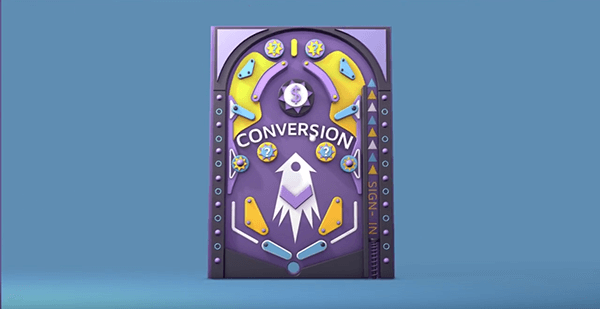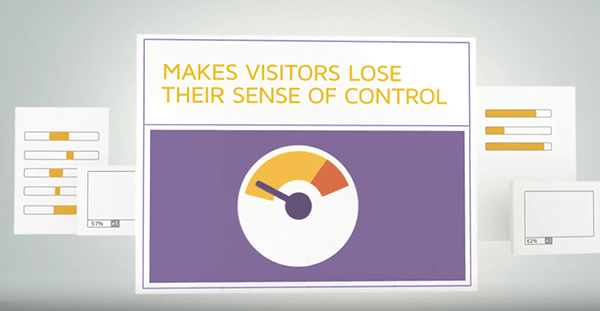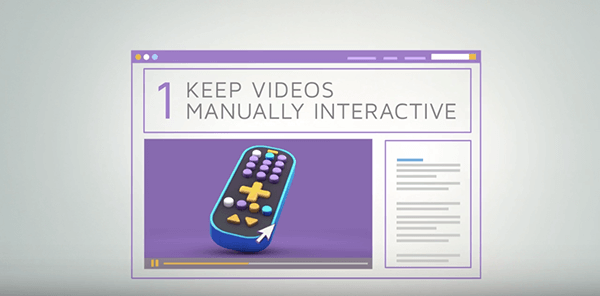Reinventing the silent era

Creating a silent-friendly video clip
“Wait a minute, wait a minute. You ain’t heard nothin’ yet!” These words from Al Jolson in The Jazz Singer in 1927 are credited as the first words ever spoken in a feature film, bringing the era of the silent movie to a close. Fast forward nearly a century, and with all our technical bells and whistles, it seems we have come full circle and are re-entering a new age of silent movies.
This apparent about-face grew from increasing dissatisfaction of users who were unhappy with autoplay online video ads unexpectedly blasting sound into their feeds when they scroll through their Facebook pages and other online media. We’ve all been there – you’re quietly having a little work break in your open space office, and suddenly Minions are yelling gibberish at you and anyone in a 5-meter radius. Not cool.
And not just at the office: The massive growth in mobile means that people go online in public places tens of times every day (at least), and don’t want to be a nuisance to those around them by unexpectedly blasting audio from their phones.
Turns out that it’s in advertisers’ interests as well to mute the volume. Four out of five users react negatively to the advertiser and the site on which the video is playing when this happens, according to a Facebook study.

Image: Settawat Udom/Shutterstock
SHUTTING UP
Faced with this negative response, over the past few years, publishers and social media outlets began to mute their videos by default. Instagram was a trailblazer, introducing auto-play video in 2013 with default muted videos. When Facebook also introduced an ecosystem that silently autoplays videos, the impact was a (silent) shot heard around the world.
But unlike the pre-1927 world, sound exists, and isn’t going away. So, the paradigm shift was all about making these video clips volume agnostic. This is just a fancy way of saying users need to be able to watch the clips with or without sound without altering the impact.
The solution was to create videos that can be read as well as heard.
Text overlays or subtitles tell the story without requiring sound. Those with the luxury of not worrying about annoying their neighbors in their offices, on trains, or in a classroom, or who use headphones, can crank up the volume and listen to the voiceovers and music.

WE ARE ADAPTABLE
If human beings are one thing, we are adaptable. Very quickly, users adopted this new video format and reacted positively. Facebook found that captioned video ads increased video view time by an average of 12%. Today, 85% of Facebook video views are played with the sound off.
Advertising media planning agency MEC North America concurs with this statistic: 85-90% of views of their clients’ branded videos are silent. And surprisingly, engagement is unaffected by the mute button. The agency found that watching videos with the sound off did not have any negative impact on KPIs like intent to purchase.
Moreover, suddenly videos are democratized. The hearing impaired are now able to consume videos in the same way as hearing people. Location is no longer an impediment to consuming videos – your boring university professor won’t know you’re watching a clip from The Daily Show in the middle of his calculus lecture.
VOLUME AGNOSTIC VIDEOS ARE HERE TO STAY
We may not have had the time to study this phenomenon carefully yet, but one thing is clear, the user experience of a silent video will be far more positive than that of a cacophonous, blaring, intrusive clip unexpectedly starting to play with no warning to the user.
Silent videos are the “it” content of today’s social media. This year, 75% of all internet traffic is expected to be video-driven. Facebook videos get three times more engagement than any other kind of content. Still, a study done by Buffer found that only 1% of content posted by brands is videos, with links and photos taking up the rest of the not insignificant 99%. Video is still underutilized, and there are huge untapped opportunities ahead.
The benefits of the silent 21st century clip are clear. Companies seeking to make the most of the video medium should embrace this alternative. Keeping in mind that today, the vast majority of Facebook video views are played with the sound off, it’s important for companies targeting their customers with videos to carefully and smartly design their content with a silent movie approach in mind.
CREATING THE SOUND-SILENT HYBRID
As a video director, I now have to take a new approach to what I do. Videos that almost always involved voiceovers and background music now need to be clear to people watching without sound. No matter the topic, they need to be visually attractive and include lots of text at a pace that’s easy to follow.
At Clicktale (now Contentsquare), we create two kinds of movies:
- Filmed testimonials featuring satisfied customers, industry thought leaders, and partners
- Infographic animations of tips for how businesses can improve their customer experience
Each type of movie leverages different ways to present information, which need to be adapted differently to new age of silent.
HOW TO CREATE A MEANINGFUL SILENT CLIP
Here are some simple ways to create silent video clip that tell a full story, even when they’re viewed on mute:
- Prominently feature concise, easy-to read-copy throughout the video, and feature powerful images that support the textual content

- Use animation and graphics to add visual interest during audio segments that are muted

- Include audio for those who can and want to crank up the volume, but always make sure that the video can be understood by those who don’t.

- Democratize data. For videos that are not mute-compatible, include text that covers the main points of the video.
- End video tyranny by giving customers control. For visitors who don’t have (or don’t use) speakers, or who choose not to watch videos at all, include text with the main points of the video on the website page where it’s featured so they don’t miss out.And for customers who want additional information, also offer longer-format videos, e-books and/or text case studies.Remember, your main concern as a content creator is for your message to be easily understood and for it to have an impact on viewers, no matter how it’s consumed. Make your message watchable, adaptable and above all, memorable!
We are living in exciting times, where the sounds, and sights, of silence are as engaging as voices, music and spectacular sound effects. The early 21st century has dipped back into the early 20th century for inspiration and practical solutions. If the medium is the message, then today’s video message is that less is more, silence is certainly golden, and most of all, “We ain’t seen nothin’ yet.
Clicktale was acquired by Contentsquare in 2019. Since then, tools and features mentioned in this blog may have evolved. Learn more about our Digital Experience Analytics Platform.



